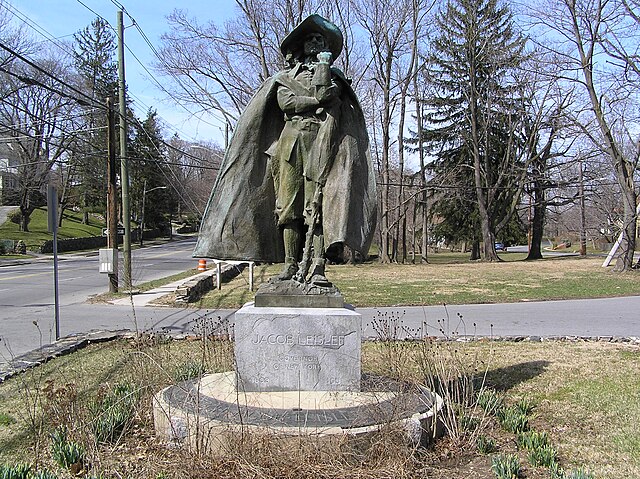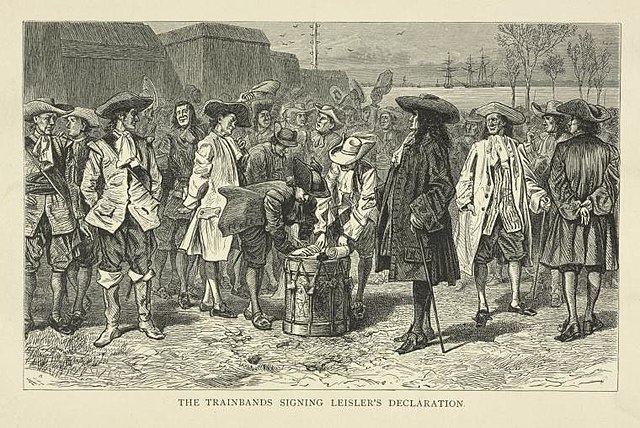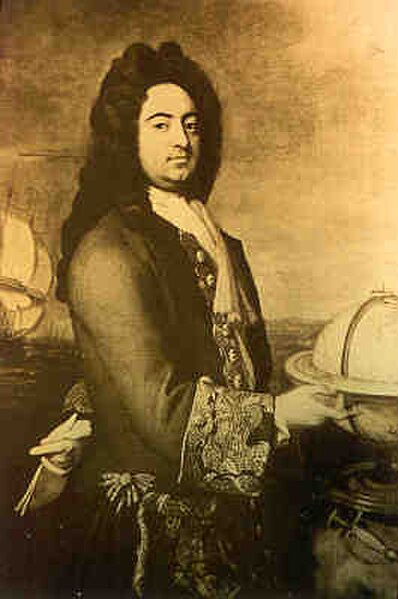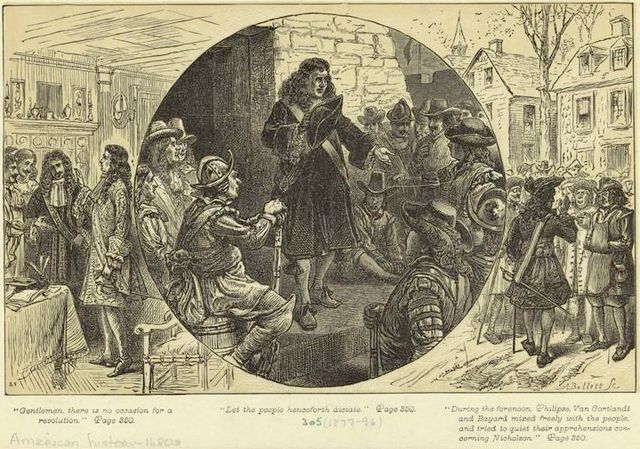Jacob Leisler was a German-born colonist who served as a politician in the Province of New York. He gained wealth in New Amsterdam in the fur trade and tobacco business. In what became known as Leisler's Rebellion following the English Revolution of 1688, he took control of the city, and ultimately the entire province, from appointees of deposed King James II, in the name of the Protestant accession of William III and Mary II.
The statue of Jacob Leisler (1913) on North Avenue in New Rochelle, New York
Howard Pyle's depiction of Governor Sloughter signing Leisler's death warrant
Elsje Tymans Leisler
Leisler's Rebellion was an uprising in late-17th century colonial New York in which German American merchant and militia captain Jacob Leisler seized control of the southern portion of the colony and ruled it from 1689 to 1691. The uprising took place in the aftermath of England's Glorious Revolution and the 1689 Boston revolt in the Dominion of New England, which had included New York. The rebellion reflected colonial resentment against the policies of deposed King James II.
Engraved depiction of militia members signing Leisler's declaration
Francis Nicholson
Nineteenth-century engraving depicting Nicholson's councilors tryting to quiet the rebellion
Statue of Jacob Leisler in New Rochelle, New York.






